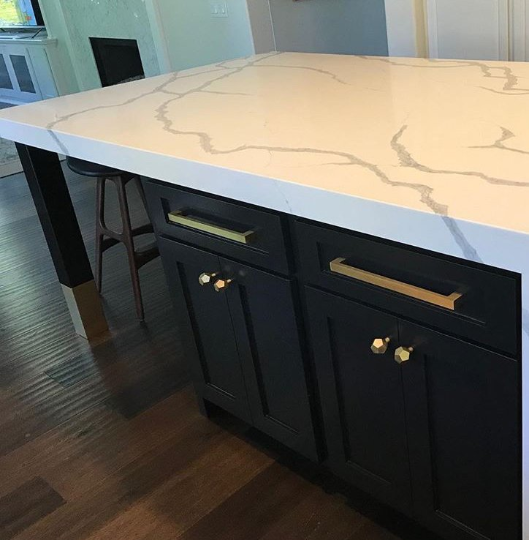Check Out Modern and Standard Designs in Legs For Kitchen Island Jobs
Check Out Modern and Standard Designs in Legs For Kitchen Island Jobs
Blog Article
Crucial Elements to Think About When Picking Legs For Cooking Area Island
Choosing the appropriate legs for a kitchen area island involves a cautious analysis of numerous variables that can substantially influence both performance and visual charm. As we discover these aspects, it comes to be clear that each choice can have significant implications for the overall kitchen area experience.
Product Options
When selecting legs for a cooking area island, recognizing the numerous product choices is essential for accomplishing both visual appeal and architectural integrity (Legs For Kitchen Island). The option of material significantly affects not just the sturdiness of the island however also its total layout and functionality
Steel legs, often made from stainless steel or wrought iron, contribute a modern-day and commercial feeling while guaranteeing toughness and security. These products are resistant to use and can support significant weight, making them perfect for larger islands.
Another choice is crafted products, like MDF or plywood, which can be much more cost-effective while still using a variety of finishes. They may not give the same degree of stability as solid wood or metal. Legs For Kitchen Island. Finally, materials such as acrylic or glass can create a contemporary appearance, though they may need additional assistance to guarantee security.
Ultimately, the choice of product for kitchen area island legs must straighten with the preferred capability and the general style of the kitchen area.
Design and Style

When taking into consideration style, the shape and surface of the legs are critical. Conical legs can offer a sense of agility and style, while thicker, extra durable legs can convey strength and security. Furthermore, the finish-- be it painted, discolored, or natural-- need to enhance the kitchen cabinetry and counter top materials to produce a unified appearance.
Furthermore, the style of the legs can also reflect personal taste. Custom or ornamental legs, such as those including complex makings or one-of-a-kind geometric shapes, can work as centerpieces, adding personality and character to the kitchen area. Eventually, the appropriate choice will not only enhance capability but additionally raise the aesthetic charm, making the kitchen area island a standout feature of the home.
Height Factors To Consider
Selecting the suitable elevation for cooking area island legs is vital, as it straight influences both functionality and convenience. The typical elevation for a cooking area island typically varies from 36 to 42 inches, straightening with typical counter top heights. A 36-inch elevation is ideal for cooking and food preparation, permitting comfy use kitchen appliances and tools. Alternatively, a height of 42 inches is usually liked for islands meant for bar seating, fitting taller stools and supplying an informal dining experience.

It is additionally necessary to represent customers' heights and choices. Personalizing the height can ensure a comfy experience for all member of the family, making the kitchen island an extra functional and enjoyable area.
Weight Assistance
Ensuring adequate weight support for kitchen island legs is essential for both security and functionality. The kitchen area island commonly serves multiple functions, including food prep work, dining, and extra storage space, requiring a durable support structure. When selecting legs, it is important to take into consideration the total weight capability needed based on the island's intended use and the materials that will certainly be put on it.
The option of material for the legs plays a significant duty in their weight-bearing capacities. Strong timber, steel, and durable composites usually give superior toughness contrasted to lighter products. In addition, the layout of the legs-- whether they are right, tapered, or have a pedestal form-- can influence their capacity to distribute weight properly throughout the framework.
Always get in touch with the maker's specifications concerning lots limitations to guarantee that the legs can sustain the intended weight without endangering security. In recap, choosing cooking area island legs with ample weight support is necessary for developing a secure and useful culinary area.
Setup and Upkeep
Appropriate installment and maintenance of cooking area island legs are important for making certain longevity and security. To begin, it is important to comply with the manufacturer's standards during setup. This frequently content entails safeguarding the legs to the island base using appropriate fasteners, ensuring that the legs are level and straightened. Utilizing a degree device can assist protect against wobbling and improve the overall aesthetic allure of the kitchen island.
When installed, normal upkeep is required to maintain the honesty and appearance of the legs - Legs For Kitchen Island. For wood legs, regular cleaning with a damp towel and application of ideal timber polish can protect against dampness damages and maintain their finish. Steel legs might need a gentle cleansing service to remove oil and grime, complied with by a completely dry cloth to avoid corrosion development
In addition, check the legs regularly for indications of wear or damages, such as splits or loose joints. Tightening screws or bolts as required can also lengthen the life expectancy of the legs. By sticking to these installment and upkeep techniques, homeowners can make certain that their kitchen island continues to be tough and aesthetically appealing for years to come.
Verdict

Visual coherence is paramount in picking the style and style of legs for a kitchen island, as these components significantly affect the overall setting of the area. Tapered legs can supply a feeling of lightness and style, while thicker, much more durable legs can share strength and stability.Picking the appropriate elevation for kitchen area island legs is vital, as it directly affects both capability and convenience. In recap, choosing cooking area island legs with click for more info appropriate weight assistance is important for creating a functional and risk-free culinary space.
In final thought, choosing legs for a kitchen island necessitates mindful factor to consider of various elements, including product alternatives, style, height, weight assistance, and setup.
Report this page